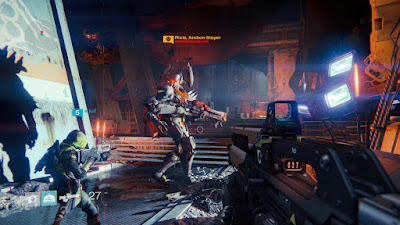In his GDC talk, Matthew Gallant (combat designer at Naughty Dog) discusses how for Uncharted 4 the combat team reevaluated how they approached combat design. Instead of tightly scripted encounters, the game moved towards a more systemic approach to NPC AI behavior. Today I'd like to examine the player experience that flows through from this approach and how it relates to the underlying system.
COMBAT ROLES
- Inspired by Pacman's Inky, Blinky and Pinky, Uncharted 4 has 3 combat roles in the game :
- Engagers - Close in on player position.
- Ambushers - Pick an ambush point and hold their ground. As the player gets closer, they pop out and surprise players adding tension and making the place feel fuller.
- Defenders - Assigned to hard points where they hold their ground and fire. This gives the player focus points to navigate towards.
- The assignment of these roles are systemic and based on a set of global parameters.
- But ofcourse the player is unaware of this internal system. So how does this system translate into a player experience?
- The player's mental model of a combat arena (when in an active state of combat, i.e., not sneaking) is quite simply an internal priority list for who to fire at. Below are some of the factors based on which this prioritization occurs :

- Damage dealing ability
- Distance from player
- Jeopardy to current position
- Maneuverability to next cover position or vantage point
- The key to the nature of these global params is to accommodate for the ability to break the player's mental model in incremental steps.
- For example, the engager count and time delay to replace an engager result in an NPC dynamically becoming an engager when an NPC is killed. This essentially invalidates the player's established next steps but in a manner that she can clearly react to.
- The params also need to be constructed in a manner that the player is incapable of predicting the reaction of the system to her actions.
- Therefore, the resulting experience from this system is one of constant re-prioritization where the player is constantly reacting to systemic changes.
- In TLOU, due to the instant death nature of contact with clickers the player is expected to formulate a strategy for as large a window as time as possible.
- From that point onward, gameplay revolves around deft execution of that strategy through timing.
- The player is expected to react at points where she fails to execute on a given strategy or when the strategy has failed to accommodate certain aspects of the layout.
- However, the result is to scramble to safety and reevaluate. In this manner player's are much more constrained than in Uncharted, in two ways :
- In UC planning is only incentivized not enforced.
- In TLOU, reactions are high pressure break points from game flow. In UC, the player is in a constant reactionary state.
- However, the tight constraints in TLOU, implies that situations where the player is pressured into breaking free from these constraints are meaningfully differentiated and create a tension that Uncharted's systemic combat can never achieve.
SYSTEMIC AUTHORSHIP - ILLUSION OF AGENCY
- In the talk, Gallant also makes the assertion that it was important to the design team to be able to continue to exert a controllable degree of authorship over each encounter. I'd like to examine how systems can accommodate for such tight authorship when required.
- The solution is heavily dependent on level design based indirect control. I think it is safe to say the more vast the encounter space, the harder it is to author.
- For example, consider the following encounter (Reunion) :

- From the player's perspective this may seem like a pretty open space at first glance. However, there are really only two arteries that run through this space. It roughly corresponds to the following layout :
- The furthest defender is an RPG wielding bad ass so he's pretty much your directional indicator. The natural behavior from this layout is to use one of the first two cover points to get a better layout of the land.
- At this stage, the player is forced to choose one of the two arteries that cut through the level. However, the game employs a few tricks to force the player into the decision it wants her to make, i.e., select the elevated path :
- Each of the cover points are destructible forcing the player to shuffle right, i.e. towards the "right" path.
- Incoming engagers and defenders reinforce the decision to go right to gain additional cover.
- The nature of the layout is sufficiently clear for the player to decipher vantage ability.
- Once the player has climbed onto the ledges, the game is now poised to counter the player with tailored scenarios made possible systemically. For example :
- The player hanging on the ledge triggers an ambusher setting the player up for an over the ledge gun shot.
- Similarly, the player jumping thresholds triggers ambushers on a different vertical axes as shown below. Additionally, killing the ambusher allows the defenders to be reassigned to engagers further pressing the player to utilize his vertical vantage.



















